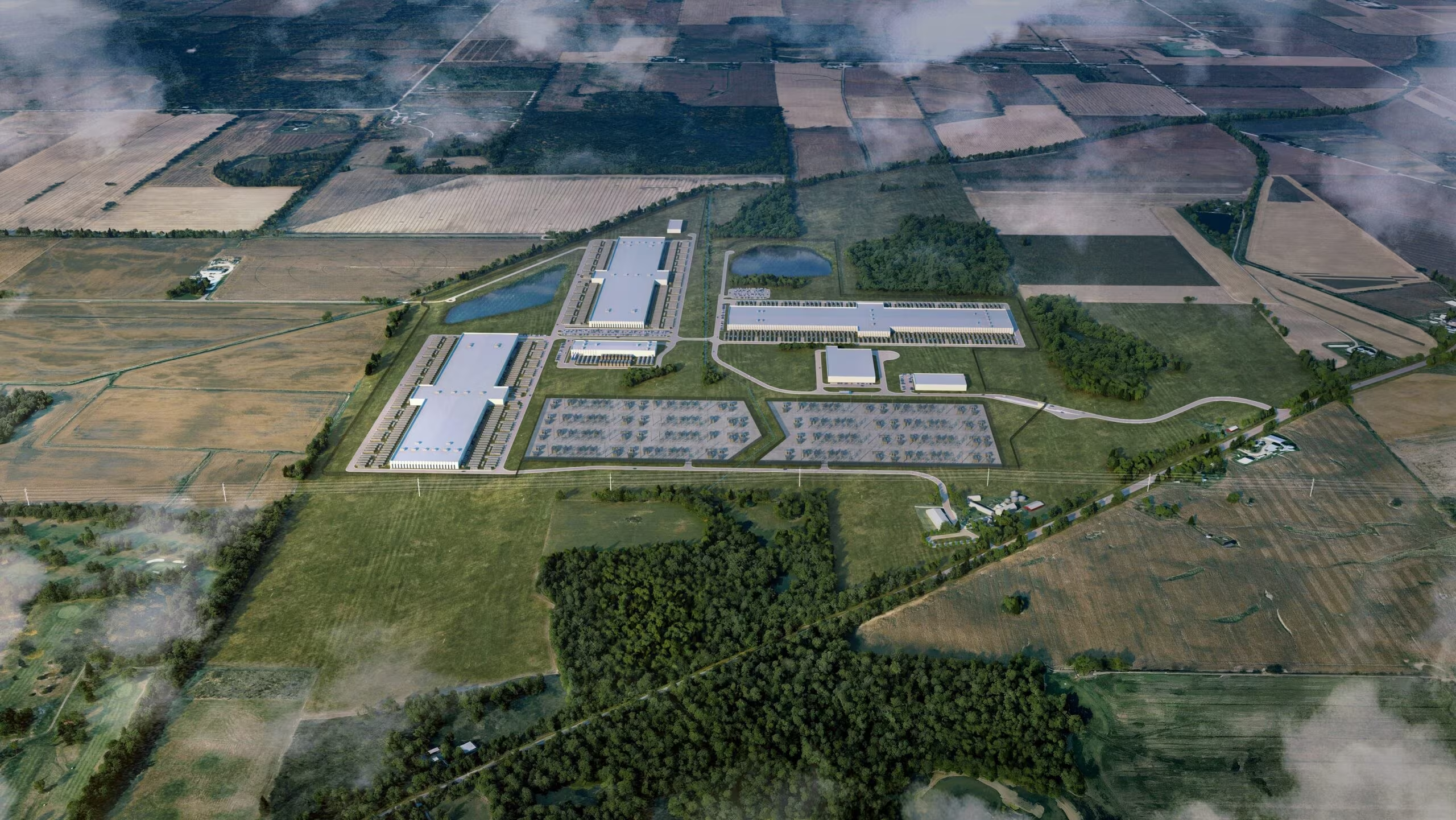Michigan Secures Major AI Infrastructure Investment with New Data Center Plan
In a landmark announcement signaling a massive commitment to artificial intelligence infrastructure, a powerful consortium involving OpenAI, cloud giant Oracle, and real estate firm Related Digital has unveiled plans for a colossal new data center near Ann Arbor, Michigan. Related Digital, controlled by billionaire megadonor Stephen Ross, is spearheading the development, which is slated for construction on existing farmland.
The plan, which became public on Thursday, late in October 2025, immediately positions the Ann Arbor region as a critical hub for the next generation of computing power. Data centers of this scale are essential for training and running the complex large language models (LLMs) that power applications like ChatGPT, demanding immense resources and specialized facilities.

The Strategic Partnership: Real Estate Meets Cloud and AI
The collaboration brings together three distinct but complementary industry leaders, ensuring the project has the necessary capital, technology, and operational expertise.
Related Digital and Stephen Ross’s Vision
Related Digital, a subsidiary of the Related Companies founded by Stephen Ross, is primarily known for large-scale real estate developments. Ross, a highly influential figure and major University of Michigan donor, has long invested in projects aimed at boosting economic development in his home state. His involvement underscores the significant capital and development muscle required for infrastructure projects of this magnitude.
The Role of Oracle and OpenAI
OpenAI, the developer behind the globally recognized ChatGPT platform, requires ever-expanding computational capacity to maintain its lead in the generative AI space. This new facility will provide the critical processing power needed for future model iterations.
Oracle, a global leader in cloud computing and enterprise software, is expected to provide the underlying cloud infrastructure and hardware necessary to operate the facility. Oracle has been aggressively expanding its cloud footprint, often partnering with major AI players to secure high-demand workloads.
This tripartite agreement is a clear example of how the burgeoning demand for AI is reshaping the commercial real estate and technology sectors, requiring specialized, high-density infrastructure.
Location and Local Impact
The decision to locate the massive facility on farmland near Ann Arbor highlights the intense competition among states and regions to attract major technology investments. While the exact acreage and financial scope were not immediately disclosed, the term “massive” suggests a multi-hundred-million or even billion-dollar investment.
Why Ann Arbor?
Ann Arbor, home to the University of Michigan, offers several strategic advantages for a project tied to advanced technology:
- Talent Pool: Proximity to a world-class research institution ensures access to top engineering and AI talent.
- Connectivity: Michigan offers robust fiber optic connectivity, crucial for high-speed data transfer.
- Land Availability: While controversial due to the use of farmland, the location offers the large, contiguous parcels of land required for modern data center campuses, which often span hundreds of acres.
The Farmland Controversy
The planned conversion of agricultural land into a massive industrial facility is likely to generate significant local debate. Data centers, while providing high-paying jobs during construction and operation, are also known for their substantial demands on local resources, particularly electricity and water for cooling.

Data Centers: The Engine of Modern AI
To understand the significance of this investment, it is crucial to recognize the role of these facilities in the AI ecosystem. Data centers are not merely storage units; they are high-performance computing factories.
- Training Models: Training a cutting-edge large language model requires months of continuous processing on thousands of specialized GPUs. This process generates enormous heat and consumes vast amounts of electricity—often equivalent to a small city.
- Inference: Once trained, the models still require significant power (inference) to answer user queries in real-time, as seen with ChatGPT.
Michigan’s ability to provide reliable, large-scale power infrastructure was undoubtedly a key factor in securing the project. The state has been actively seeking to attract high-tech manufacturing and infrastructure investments as part of its economic diversification strategy.

Key Takeaways
This massive infrastructure project near Ann Arbor represents a significant development for both Michigan and the global AI industry:
- Major Investment: The partnership between OpenAI, Oracle, and Related Digital (Stephen Ross) signifies a multi-million or billion-dollar commitment to Michigan.
- AI Backbone: The facility will serve as a crucial data center, powering the intense computational needs of OpenAI’s advanced models.
- Location: The site is planned for farmland near Ann Arbor, leveraging proximity to the University of Michigan’s talent pool.
- Resource Demand: The project will place substantial demands on local power and water resources, a common characteristic of hyperscale data centers.
Conclusion
The decision by some of the world’s most powerful technology and real estate entities to invest heavily in Michigan’s infrastructure confirms the state’s growing relevance in the high-tech sector. While the conversion of farmland presents environmental and land-use challenges that local officials and residents will need to address, the project promises to anchor a significant portion of future AI development in the Ann Arbor area, driving economic activity and attracting highly skilled workers. The successful execution of this plan will be a critical test case for how states balance agricultural preservation with the relentless demands of the digital economy.
What’s Next
Following the late October 2025 announcement, the next steps will involve detailed planning, securing local zoning approvals, and addressing environmental impact assessments. Given the scale and the high-profile nature of the partners involved, the project is expected to move forward rapidly, though local regulatory processes, particularly concerning land use and utilities, will determine the final construction timeline.
Original author: Summer Ballentine, Breana Noble, Beth LeBlanc
Originally published: October 30, 2025
Editorial note: Our team reviewed and enhanced this coverage with AI-assisted tools and human editing to add helpful context while preserving verified facts and quotations from the original source.
We encourage you to consult the publisher above for the complete report and to reach out if you spot inaccuracies or compliance concerns.

